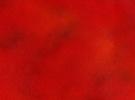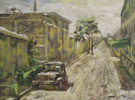
展览时间:2010-09-10 ~ 2010-10-07
展览地点:James Cohan画廊
参展艺术家:理查德·朗
开幕酒会:2010-09-10 (周五) 16:00~18:00
展览介绍:
上海James Cohan画廊很荣幸地呈上国际知名英国艺术家理查德•朗(Richard Long)首个中国个展。1945年生于英国布里斯托的理查德•朗是今天国际艺术领域里极富影响力的一个名字,他的创作拓展了雕塑于传统材质和方法之外的可能性。本次展览将呈现艺术家的新作——他用石头和泥等中国本土的材料创作的作品,包括雕塑、点满指印的物件、彩色泥土制作的墙面作品以及摄影与文本作品。
在理查德•朗的创作中,“行走”这一活动乃是其核心。缘起于1960年代中,朗在世界各地开始了不计其数的“行走”,途径之地包括撒哈拉沙漠、澳大利亚、冰岛以及其故乡布里斯托等地。在其近期首次中国之行中,艺术家的足迹踏至云南、四川,这也是其此次个展题目的出处与灵感。行走的观念,作为一种雕塑的形式起初被视作是激进的想法,当时22岁的理查德•朗创作了一件名为《走出一条线(1967年)》的作品,给行走这一作者与生俱来的行为注入了新的意味。伦敦泰特美术馆馆长Nicholas Serota如此评价道:“艺术史从未能给我们预示朗的行为的原创性。”雕塑,可以是关于空间和时间的,亦如其是关于材质与形式的一样,艺术家本人如是说。
理查德•朗的行走将多种元素共冶一炉,譬如生理的忍耐力以及测量的原理、行动和思想。这类行走提供了艺术家创作的观念和材质。这些由当地的原材料制成的雕塑、墙面作品,通常赋予几何形态,比如,圆、线、椭圆、螺旋形。它们的简洁性和整齐划一的形态体现了这位艺术家与自然地景之间最本源的关系。不论是创作的过程或者行走的本身,其中圆形形态占据了主导地位。圆形是不受时间空间约束的普遍存在,而石头则是寻常、实际、无处不在的。“我感兴趣的是简单图像里的感情力量。”艺术家解释道。本次展览,艺术家将会用中文创作一件墙面作品,题为《往东直行》。这件文字作品记录了理查德•朗的行走,运用了观察资料、叙述现实以及思考的片段。就如同艺术家其他的文字作品,这件作品可能是极其观念的,但又可以是高度感官化的,它展示了文本的简洁性和观念是如何激发了我们的想象力。
理查德•朗于1945年出生于英国的布里斯托,现仍生活、工作于当地。他曾就读于西英格兰艺术学院,后于1966年进入伦敦圣马丁艺术设计学院学习。迄今为止,朗已经在全世界各地的重要博物馆、机构展出,譬如,旧金山现代美术馆的展览《道路即是地点即是线条》(2006年)、苏格兰国家现代画廊的《且行且标记》(2007年),以及法国尼斯的现当代美术馆的展览(2008年)等。2009年,伦敦的泰特英国美术馆(Tate Britain)举办了具有重要意义的调研式展览《理查德•朗:天与地》。理查德•朗曾于1976年代表英国参加了威尼斯双年展,1989年荣获特纳奖(Turner Prize)。次年,他获得了法国文化部的艺术及文学骑士勋章。2009年,朗又荣获日本皇室世界文化奖的雕塑领域奖。今天,理查德•朗的作品已进入许多国际知名的公共、私立收藏之中,其中包括了伦敦的泰特美术馆、纽约的现代美术馆(MoMA)、渥太华的加拿大国家画廊以及巴黎市立现代美术馆等。
September 10 through November 7, 2010
James Cohan Gallery Shanghai,
1/F, Bldg. 1, No. 1 Lane, 170 Yue Yang Road, Shanghai
Opening reception: Friday, September 10th, 2010, 4-6 pm.
James Cohan Gallery Shanghai is pleased to present the first solo exhibition in China by the internationally renowned British artist Richard Long. Considered one of the most influential artists of his generation (b. 1945), Long’s works have extended the possibilities of sculpture beyond traditional materials and methods. In this exhibition of new works Long will also use materials indigenous to mainland China, such as stone and clay, and will feature sculpture, fingerprinted objects, a wall work made of colored clay, photographs, and text works.
Central to the artist’s work is the activity of walking. Since the mid-1960s, Long has made countless walks throughout the world, in such places as the Sahara Desert, Australia, Iceland, and near his home in Bristol, England. Most recently, during the artist’s first trip to China, Long made works in Yunnan and Sichuan provinces, one of which is the source and inspiration for the title of his exhibition. The notion of walking as a form of sculpture was considered a radical idea when the artist, at age 22, made a work, titled A Line Made by Walking (1967) and gave new meaning to an activity as old as man himself, states Nicholas Serota, director of Tate Britain in London: “nothing in the history of art quite prepared us for the originality of his actions.” Sculpture, as Long has suggested, could be about place and time as well as material and form.
The walks bring together physical endurance and principles of measurement, action, and idea. From these walks emerge ideas and materials for Long’s work. His sculptures and wall works commonly take the form of geometric shapes—circles, lines, ellipses, and spirals—using the raw materials of a place. Their simplicity and universal forms reflect the artist’s primary engagement with the landscapes of the world. Like the creative process as well as the walk, the circularity is paramount. Circles are timeless, universal; stones are common, practical, and exist almost everywhere. “I am interested in the emotional power of simple images,” Long has stated. Also for this exhibition, the artist will make a new wall-text work in Chinese, West East Line Walk. These text works are records of Long’s walks, using observations, narrative facts, and fragmentary thoughts. Like other text works by the artist they are perhaps the most conceptual, but can also become highly visceral in how they bring the simplicity of words and ideas into our minds for our imagination.
Richard Long was born in Bristol in 1945 where he continues to live and work. He studied at the West of England College of Art, before going to St Martin’s School of Art and Design, London, in 1966. Long has exhibited extensively at many major museums and institutions around the world, such as The Path is the Place is the Line, San Francisco Museum of Modern Art, San Francisco (2006), Walking and Marking, Scottish National Gallery of Modern Art, Edinburgh (2007) and at the Musée d'Art Moderne et d'Art Contemporain, Nice, France (2008). In 2009, Tate Britain held Richard Long: Heaven and Earth a major survey of Richard Long’s work. Long represented Britain in the British Pavilion at the Venice Biennale in 1976 and was awarded the Turner Prize in 1989. In 1990 he became a Chevalier dans l’Ordre des Arts et des Lettres. And he was awarded the highest international distinction for achievement in the arts, the Praemium Imperiale Prize for Sculpture in 2009. Long’s work is included in many prestigious public and private collections worldwide, including Tate, London, the Museum of Modern Art, New York, the National Gallery of Canada, Ottawa, and Musee d'Art Moderne de la Ville de Paris, Paris, among many others.
- 2011-04-30 ~ 2011-05-30出窍记·缪晓春个展
- 2011-04-29 ~ 2011-05-20静中人Figures of Silence —Michel Madore
- 2011-04-30 ~ 2011-05-14黑白
- 2011-05-28 ~ 2011-07-28四重奏——孟昌明水墨荷花作品展
- 2011-05-28 ~ 2011-06-24“远与近”意大利当代著名艺术家作品展
- 2011-05-28 ~ 2011-07-02底下有石头:杨心广个展
- 2011-05-21 ~ 2011-06-20湖滨诗境──Celest生态摄影展(续展)
- 2011-05-21 ~ 2011-06-05缓行——十二位八零后艺术家
- 2011-04-28 ~ 2011-06-05观天悟道——张国龙艺术巡展
- 2011-05-28 ~ 2011-07-10诺特·维塔尔:激浸










